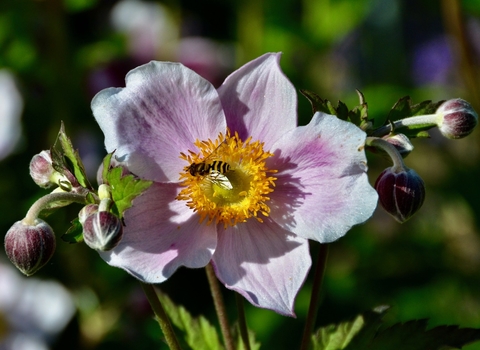
Common banded hoverfly © Linda Seward
Common banded hoverfly
The common banded hoverfly has a fitting name: it is not only one of our most common species, its black body is also covered in yellow bands! It can be seen in many habitats from gardens to woodlands.
